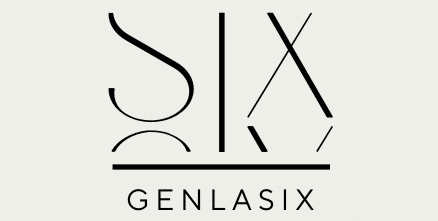What are the emerging opportunities in real estate for health and wellness-focused properties?

In today’s fast-paced society, the value of health and wellness continues to rise, now more than ever. The global movement towards healthier and more sustainable lifestyles is influencing various sectors, including the real estate market. Real estate developers, buyers, and investors are now seeing massive potential in health and wellness-focused properties – residential homes and communities designed with a clear emphasis on promoting healthy living and overall wellbeing. This article will explore the emerging opportunities in real estate for these health and wellness-focused properties.
The Rising Demand for Health and Wellness-Focused Properties
The past few years have paved the way for the rise of health and wellness-focused real estate. This trend is not just a fleeting buzzword in the industry. It’s a significant shift in the market that developers, investors, and buyers alike can no longer ignore. Wellness real estate is becoming an increasingly lucrative sector, opening a plethora of opportunities for those willing to tap into this burgeoning market.
Also to see : How to ensure compliance with evolving environmental regulations in real estate development?
As people become more health-conscious, the demand for homes that promote and facilitate wellness continues to increase. This trend reflects not only in the luxury market but also in the broader residential sector. People are seeking homes equipped with fitness centers, indoor and outdoor spaces that encourage physical activity, access to healthier food options, and environmentally friendly designs.
The Role of Real Estate Developers in Building Wellness Communities
Real estate developers have a pivotal role to play in this wellness revolution. As the ones in charge of designing and building these wellness-focused properties, developers hold the key to making these wellness communities a reality. This is not just about constructing buildings and homes, but creating a holistic environment where residents can thrive and lead healthier lives.
Also read : What are the best strategies for real estate asset repurposing in changing markets?
The development of wellness communities involves careful planning and design, incorporating elements that promote physical activity, social interaction, and access to nature. Developers also need to incorporate sustainable practices, ensuring the community’s long-term impact on the environment is minimal.
The Global Market for Wellness-Focused Real Estate
The global market for wellness real estate is flourishing. According to the Global Wellness Institute, the wellness real estate market was worth $134 billion in 2017 and is expected to grow to $180 billion by 2022. This rise has led to a surge in investment opportunities in wellness-focused residential projects.
The growth of the wellness real estate market is not confined to one region or country. It’s a global phenomenon, with North America and Asia leading the charge. In the US, wellness communities are emerging in major cities and suburbs alike. In Asia, countries like China and India are also seeing a boom in wellness real estate.
The Social Impact of Wellness Real Estate
The emergence and rise of wellness real estate is not just about profits and market growth. It’s also about the positive social impact these developments can have on communities. These wellness-focused communities are designed to promote healthier lifestyles, which can have significant benefits for residents and the wider community.
Healthier communities can result in lower healthcare costs, reduced stress, and improved quality of life. Moreover, the emphasis on sustainability in these developments can have positive environmental impacts, contributing to the global effort to combat climate change.
The Future of Wellness Real Estate
As the demand for health and wellness-focused properties continues to grow, the future of wellness real estate looks bright. This trend is not just a passing fad. It represents a shift in societal values towards healthier and more sustainable living. As such, it’s a trend that developers, investors, and buyers should pay attention to.
Developers will need to continue innovating, ensuring their properties meet the evolving demands of health-conscious buyers. Investors will need to recognize the potential in this market and capitalize on the opportunities it presents. Finally, buyers will need to continue demanding properties that promote and facilitate healthy living.
Wellness Real Estate and Sustainability
When we think about health and wellness, we can’t ignore the importance of the environment and sustainability. The real estate market is becoming more aware of its role in climate change and is making efforts to reduce its carbon footprint. As a result, wellness-focused real estate is also becoming synonymous with green building and sustainable design.
Real estate developers are now incorporating sustainable practices into the design and construction of wellness-focused properties. These could include the use of renewable energy sources, energy-efficient appliances, water saving fixtures, and sustainable materials. Some developments are even going a step further, integrating urban farming areas and edible landscapes to encourage a healthier and more sustainable lifestyle.
In the commercial real estate sphere, businesses are also recognizing the importance of a healthy and sustainable work environment. Companies are increasingly demanding offices that not only promote the physical and mental health of their employees but are also conscious of their impact on the environment. This further emphasizes the potential growth and relevance of wellness real estate in the commercial sector.
The integration of wellness and sustainability in real estate is creating a new facet in the market – wellness oriented, sustainable communities. These developments provide an environment that promotes not only individual health and wellbeing but also the health of the planet. This combination of personal and environmental health is a compelling selling point for many buyers and investors, further fueling the growth of the wellness real estate market.
Conclusion: Embracing the Future of Wellness Real Estate
The rise of health and wellness-focused properties in real estate is indicative of a larger shift in societal values. People are placing a higher value on health, wellbeing, and sustainability, and this is clearly reflected in the emerging trends in the real estate market. With evidence based benefits such as improved mental health, reduced healthcare costs, and positive environmental impacts, the appeal of wellness real estate is undeniable.
For real estate developers, embracing this shift and incorporating wellness and sustainability into their projects can provide a competitive edge in the increasingly health-conscious market. For investors, the wellness real estate provides a lucrative opportunity, with the Global Wellness Institute predicting significant growth in the coming years.
For buyers, whether individuals or commercial entities, wellness-focused properties offer a chance to align their living or working environment with their values of health and sustainability.
Looking ahead, it’s clear that the future of real estate lies in creating spaces that not only meet our basic housing needs but also actively contribute to our health and wellbeing. The rise of wellness real estate is here to stay, and it represents a positive step forward in our pursuit of a healthier, more sustainable lifestyle. In the words of architect Slavik Tsuyuki, "We are not just building homes, we are building wellbeing." And that is an investment worth making.
